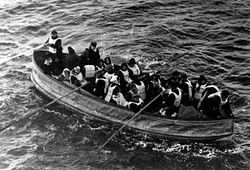Lifeboat ethics

Lifeboat ethics is a metaphor for resource distribution proposed by the ecologist Garrett Hardin in 1974.[1]
Hardin's metaphor describes a lifeboat bearing 50 people, with room for ten more. The lifeboat is in an ocean surrounded by a hundred swimmers. The "ethics" of the situation stem from the dilemma of whether (and under what circumstances) swimmers should be taken aboard the lifeboat.
Hardin compares the lifeboat metaphor to the Spaceship Earth model of resource distribution, which he criticizes by asserting that a spaceship would be directed by a single leader — a captain — which the Earth lacks. Hardin asserts that the spaceship model leads to the tragedy of the commons. In contrast, the lifeboat metaphor presents individual lifeboats as rich nations and the swimmers as poor nations.
Lifeboat ethics is closely related to environmental ethics, utilitarianism, and issues of resource depletion. Hardin uses lifeboat ethics to question policies such as foreign aid, immigration, and food banks.
See also
- Balloon debate
- Carrying capacity
- Food for Peace
- Intergenerational ethics
- Population control
- Ratchet effect
- Repugnant conclusion
- Triage
- Zero population growth
- Women and children first (protocol)
References
- ↑ Hardin, Garrett (September 1974). "Lifeboat Ethics: the Case Against Helping the Poor". Psychology Today. Retrieved July 29, 2006.
External links
- Lifeboat ethics - a case against helping the poor (Garrett Hardin Society)
- Hardin, G. 1974. "Living on a lifeboat" Bioscience 24 (10), 561-568.